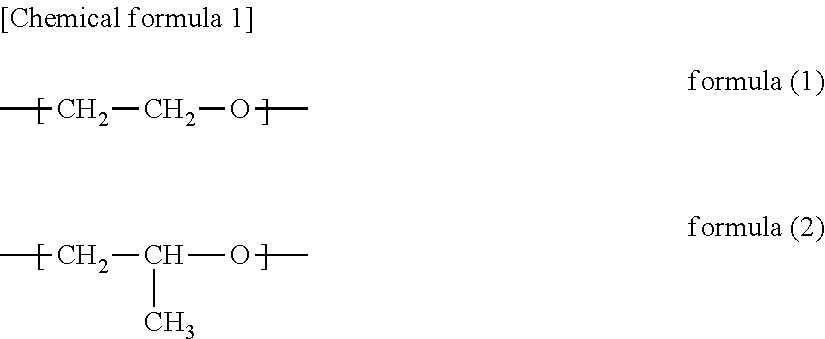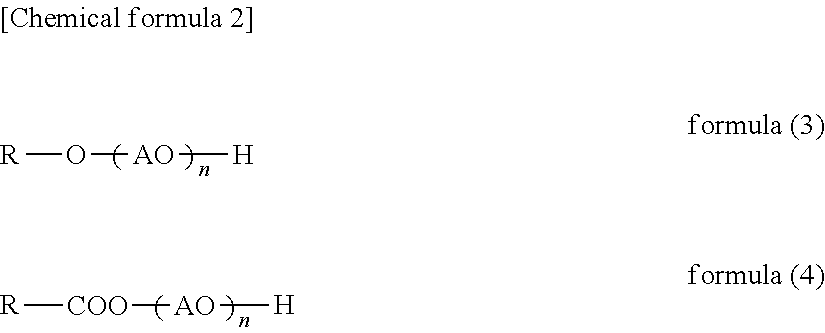Toner
a technology of toner and spherical plate, which is applied in the field of toner, can solve the problems of prone to suffer from a reduced long-term storability, environmental stability, or durability, and become quite problematic to achieve a toner equipped with both low-temperature fixability and durability. excellent long-term image stability and excellent environmental stability
- Summary
- Abstract
- Description
- Claims
- Application Information
AI Technical Summary
Benefits of technology
Problems solved by technology
Method used
Image
Examples
example 1
[0137]Hydrochloric acid was added to the fluid dispersion of toner particles 1 to bring the pH to 1.4 and the calcium phosphate salt was dissolved by stirring for 1 hour. Using a discharge pump, this fluid dispersion of toner particles 1, in which the calcium phosphate salt was dissolved, was continuously discharged and continuously transported at 20 kg / h to a belt filter (Synchro-Filter from Tsukishima Kikai Co., Ltd.) and was dewatered·washed using the conditions given below to give a wet toner particle cake. The nonionic surfactant-containing wash water referenced below had the composition given in Table 3.
slurry feed rate: 20 kg / h
feed rate for nonionic
surfactant-containing wash water: 7.3 kg / h
vacuum: −70 kPa (70 kPa reduction from atmospheric pressure)
[0138]The cake was then pulverized and dried until the water content of the toner reached to 2.0 mass % or less. A moderate quantity of coarse particles and microfine particles was subsequently removed by air classification. Finall...
examples 2 to 38 and example 40
[0150]Toners 2 to 38 and toner 40 were obtained by carrying out investigations as in Example 1, with the exception that the fluid toner dispersion used in Example 1 was changed to the composition shown in Table 3 and the nonionic surfactant-containing wash water used in Example 1 was changed to the composition shown in Table 3. The properties of the toners are shown in Table 3 and the results of the evaluations are shown in Table 4.
example 39
[0151]A toner cake was obtained by subjecting the fluid dispersion of toner particles 2 to solid-liquid separation at a pressure of 0.4 MPa using a pressure filter with a capacity of 10 L. After this, ion-exchanged water was added to the pressure filter to capacity and washing was performed at a pressure of 0.4 MPa. This same washing procedure was performed an additional 8 times. On the 9th wash, the nonionic surfactant-containing wash water shown for Example 39 in Table 3 was added to the pressure filter to capacity and washing was carried out under the same conditions as before.
[0152]The obtained toner particle cake was pulverized and drying was performed until the water content in the toner reached 2.0 mass % or below. A moderate quantity of coarse particles and microfine particles was then removed by air classification. Finally, a hydrophobic silica fine powder (number-average primary particle diameter: 10 nm) that had been surface-treated with hexamethyldisilazane was added at ...
PUM
 Login to View More
Login to View More Abstract
Description
Claims
Application Information
 Login to View More
Login to View More - R&D
- Intellectual Property
- Life Sciences
- Materials
- Tech Scout
- Unparalleled Data Quality
- Higher Quality Content
- 60% Fewer Hallucinations
Browse by: Latest US Patents, China's latest patents, Technical Efficacy Thesaurus, Application Domain, Technology Topic, Popular Technical Reports.
© 2025 PatSnap. All rights reserved.Legal|Privacy policy|Modern Slavery Act Transparency Statement|Sitemap|About US| Contact US: help@patsnap.com


